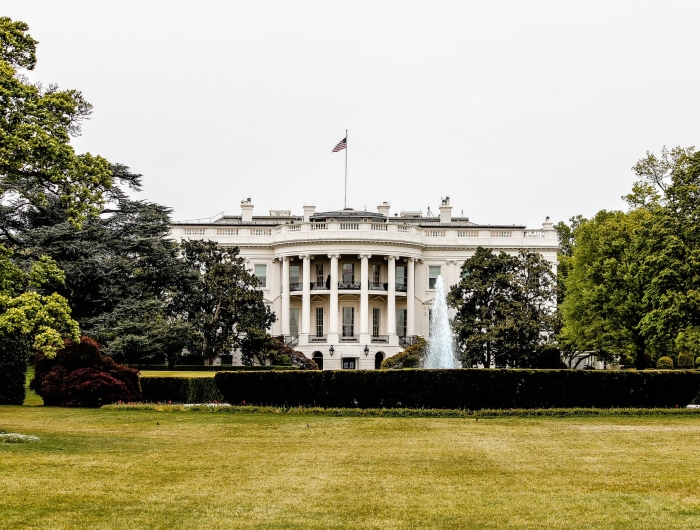Biden issues executive order promoting agriculture and food biotechnology

René DeAnda - unsplash.com.
On September 12, 2022, President Biden issued an “Executive Order on Advancing Biotechnology and Biomanufacturing Innovation for a Sustainable, Safe, and Secure American Bioeconomy.” This “National Biotechnology and Biomanufacturing Initiative” seeks to advance U.S. biotechnology and biomanufacturing to provide innovative solutions in “health, climate change, energy, food security, agriculture, supply chain resilience, and national and economic security.” Some of its goals are to increase biomanufacturing capacity in the U.S. (hopefully leading to lower drug prices), boost biomass production (which is renewable or recurring biological materials such as plant and tree material and animal and food waste), and educate the next generation of scientists and engineers in bioeconomy disciplines. While much of the Executive Order stresses health, medicine, energy and biological data, there are specific sections that apply to agriculture and food. Here are my observations about those specific sections.
Useful Information Will Be Generated that Can Inform Federal Policy
The Executive Order gives the Secretary of Agriculture 180 days to submit a report on how biotechnology and biomanufacturing can be used for food and agricultural innovation. If USDA carries out a thorough investigation, the report could be a roadmap identifying the potential of biotechnology products to improve sustainability, help agriculture adapt to and mitigate the effects of climate change, increase food quality and nutritional content, and produce alternative food sources. At the same time, the Director of OMB is required to identify existing levels of USDA spending on biotechnology and biomanufacturing-related activities. A detailed budget inventory on what different agencies and offices in USDA are investing on biotechnology, especially if broken down into categories such as basic research, product development, and risk assessment and management, would allow policymakers to determine whether the public investment in biotechnology is sufficient to achieve the potential that will be set out in the Secretary’s report.
FDA’s Role in the Food Supply and Biotechnology Innovation is Not Explicitly Acknowledged
While USDA is the identified lead for food and agriculture, the Department of Health and Human Services is also mentioned several times in the Executive Order and is designated the lead for health and medicine. The Food and Drug Administration is only mentioned once, when discussing the need for improving the clarity and efficiency of the regulatory process for biotechnology products. FDA plays important roles in many food areas, including innovative food products (e.g., cell-cultured meat and new fermentation ingredients), nutrition, food labeling, and aquaculture. FDA should be a co-lead with USDA on all food biotechnology issues. Instead, the Executive Order tasks the Secretary of Agriculture with consulting with appropriate agencies on all food and agricultural innovation. It will be critical that USDA not only engages with FDA but includes FDA’s expertise and perspective, which sometimes is different from positions taken by USDA. The same could be said for the Environmental Protection Agency (EPA), which is involved with numerous bioeconomy products (e.g., biopesticides and nitrogen fixing microorganisms) that affect agriculture and the environment.
The Regulation Section -- We Have Read the Same Before
CSPI agrees with the Executive Order’s statement that “the complexity of the current regulatory system for biotechnology products can be confusing and create challenges for businesses to navigate” (as well as for stakeholders and consumers to understand). A very similar statement can be found in the Executive Order Issued by President Trump in 2019 and previous government documents. The Executive Order requires USDA, EPA, and FDA to identify “areas of ambiguity, gaps, and uncertainties” and then provide a plan for regulatory reform. For those of us who have studied the U.S. regulatory system, the “ambiguities, gaps, and uncertainties” have been well known for years and arise from the regulation of new and novel products using statutes that never envisioned such products (i.e., like fitting a square peg into a round hole). The Executive Order also stresses the need to “take concrete steps to reduce biological risks associated with advances in biotechnology” and to invest in biosafety and biosecurity. The question will be how the Biden Administration balances these two mandates. How will it ensure the safety of biotechnology products (which is critical for consumer confidence and acceptance) while putting in place a regulatory system that is science-based, proportionate, transparent, and participatory.
While the federal government works on regulatory reform (which we all know is a long process), the Executive Order does identify some short-term actions that could be very beneficial. These include providing the public with “plain language information regarding the regulatory roles, responsibilities and process of each agency” and case studies on which agencies regulate different novel biotechnology products. The Order also envisions a unified website where inquiries about a particular product can be submitted, and submitters would receive a coordinated federal response.
Overall, the Executive Order highlights the value of the bioeconomy and the need for a coordinated policy and implementation plan to ensure the United States remains a leader in this area. However, as is always the case, the devil is in the details and those details will determine whether this initiative’s ultimate impact is positive, negative, or neutral.

